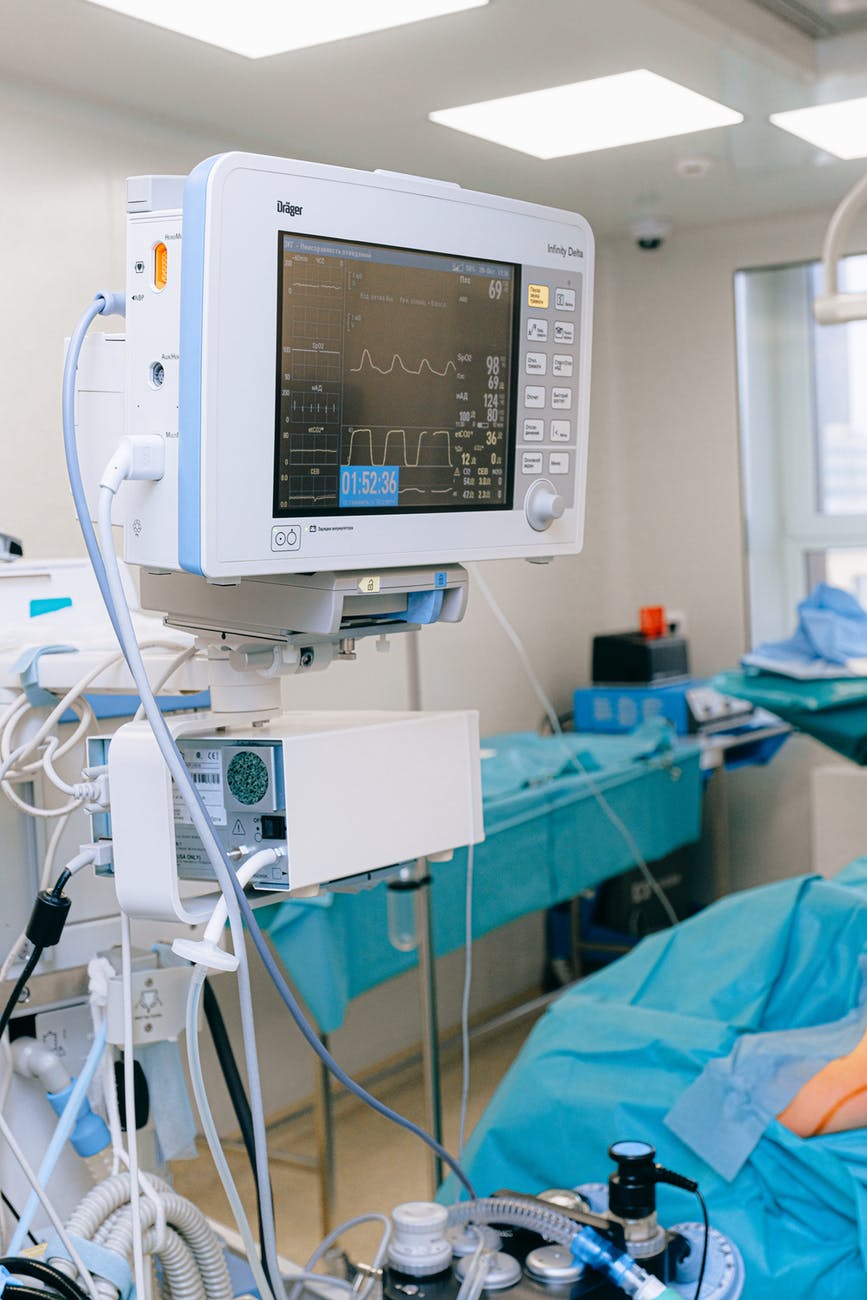The Diagnostic Industry has been omnipresent for a long time. With the discovery of X-Ray in the year 1895, medical technology has made a great leap which has helped humanity to ‘look’ beyond the impossible. Human beings are complex structures constructed intricately with flesh, bones, organs, tissues, cells, etc. With the change in lifestyle, change in climate, with increasing stress in daily life, human beings are susceptible to various diseases and syndromes. The fastest-moving medical technology has helped us to have a detailed and minute observation of the interior functions of the body for better and accurate treatment. The diagnosis is the first step towards any medical treatment and procedures. Based on the diagnosis, the medical practitioners and doctors will start the treatment. Since 2010, several advances have happened in the diagnostic industry, in terms of technological progressions and also the introduction of new players in the market.
The diagnostic industry is not so structured, unlike the insurance industry or the automotive industry. The only mandatory formality that one has to do is the registration under Shops and Establishments Act. Other than this, there are no other standards and registrations required to set up pathological labs or diagnostics centres. Only 1% of the diagnostics lab has acquired accreditation with NABL (National Accreditation Board for Testing and Calibration Laboratories). The labs aiming to generate global clientele are also acquiring accreditation with the College of American Pathologists (CAP). Some of the big players in this sector are Apollo Diagnostics, Thyrocare, Dr. Lal’s, etc. But since the beginning of the decade, many new labs have come to be.
What other major changes took place in this sector? The following paragraphs will give you a glimpse of the same.
New players of Diagnostic Industry:
In 2012, Zoya Brar, a 23-year-old with a dream to take a plunge in entrepreneurship, started her diagnostic lab in Bengaluru, CORE. It is the fastest-growing diagnostic lab making a prominent position in high-end diagnostic space. It has developed more than 1500 diagnostic procedures in oncology, gynaecology, and other infectious diseases. Its mission is to speed up the diagnostic process with advanced technology and making it accessible and affordable for anyone who is in need. Apart from the already existing players, new pathological labs took to prominence to bridge the gap between the rising demands and supply metrics.
There are many such pathological labs in India, turning the diagnostic space highly competitive. With the arrival of this decade, the Indian user base is shifting towards convenience and quality at a fast pace. The recent entrants on this sector are on the continuous quest to arrange more personalized and technological advanced testing, keeping the rates affordable. The steep competition in this sector is often leading to a sudden surge in the number of pathological labs in the country. The common mass is becoming proactive in taking care of their health, the demand is rising, and so is the number of labs in India and the world as a whole.
The beginning of the decade witnessed the emergence of new players in the game, but they could not oust the already existing bigger players like Apollo and Metropolis.
Technological Advances in Diagnostic Industry:
This decade has seen some major technological advances in the diagnostic industry. AI-enabled Image Processing is resulting in faster and more accurate analysis of the medical reports. The early detection of aliments in early stages is boosting the growth in this sector. Many tools are being developed for simplifying procedures, but the major invention in this sector is of Health Information Technology (Health IT) tools. Health IT plays a vital role in capturing information about a patient. This includes clinical history and interview, medical procedures and results, physical exam, diagnostic test results etc. Image processing and Image Analysis were incorporated in Diagnostic sector years back. But this decade has seen some major developments and updates in this domain.
The scientific technology behind Medical Image Processing is developing every single day, and the Diagnostic Industry needs AI-driven software for doing the rest of the duties. The software and the machines will capture the images and the AI will be an aid in the analysis of abnormalities as detected by the Image processing. For treating cancers, AI will use specially formulated algorithms to measure the probability of a tumour of being benign or malignant. This will help the doctors and medical professionals to make the right decisions about the ongoing treatment.

Advanced Image processing is helping the doctors and paramedics to find abnormalities in the body functions. They can make a straightforward diagnosis using Image processing methods like Ultrasound, Endoscopy, CT scan, MRI scan etc. Reading these images is possible by the software, giving the medical science a competent digital assistance. Due to the addition of the technological advances in the diagnostic procedures, the rates also increased. The hike in charges is not repelling the general mass to a magnanimous extent due to their inclination to get the most accurate diagnosis. The apps designed for the patients’ convenience are maximizing the growth of this sector as well. CORE has its apps, mFine has been a new addition, where one can get their medical checkup at home.
Health Awareness and Insurance Penetration:
With each passing day, health awareness and wellbeing programmes are trending in a full swing. You will find smartwatches like FitBit, Health apps like Cult Fitness, and other such platforms which are guiding and influencing the user base towards a healthier lifestyle. The number of gyms, healthy food corners, well-being programmes conducted by celebrities like Milind Soman and Shilpa Shetty has motivated the crowd to eat and live healthily. The health awareness is driving the mass towards early detection and thorough routine checkup of themselves for taking precautions against any ailment.

The media, TV, Radio, Magazines stress on the health awareness programmes, and also against particular diseases like cancer, dengue etc. The decade has also seen the corporate sector taking a special interest in the health condition of employees. Thorough routine checkups of the employees, health insurance and mediclaim policies positively affect the booming of the diagnostic industry. You can rarely find someone without health insurance. Our hectic lifestyles, obsession towards junk foods, stress are giving rise to many diseases as well, which we need to fight and avert.
On one hand, the diagnostic labs are increasing, while on the other hand the food delivering apps are also increasing in numbers. It seems the modern man is in a dilemma, which one to go for! Due to the neck-to-neck competition in the market, many existing diagnostic centres are collecting samples from the patients’ homes to maintain their growth in business. The wellness programmes and insurance policies boost the demand for more and more diagnostic centres, thus marking an upward growth in this industry.
Impact of GST and Demonetization:
Medical Laboratory and diagnostic imaging services face 9% GST rate since the introduction of GST in the year 2017. GST has affected every sector of the Indian industrial landscape. Taxes saving investment plans have been coming into forefront day in and day out. The Indian government is working hard to issue minimum taxes in Healthcare sector, but still some effects cannot be eliminated. GST was levied on the highly advanced equipment used for diagnostic purposes. Due to this reason, the price hike was obvious, leading to a more expensive diagnostic procedure.
In 2016, demonetization hit the diagnostic sector and all the other sectors hard. The largest chain of hospitals in India, All India Institute of Medical Sciences (AIIMS) suffered a heavy 22% decline in the number of patients post demonetization. The patients reconsidered their decision of surgeries and medical tests due to the overnight banning of rupees 1000 and 500 notes. Demonetization caused huge turmoil in this sector. Post this turmoil, digitization and cashless transaction gained momentum.
The dire need of digitization and secured cashless and online transactions became prominent, and this is the greatest leap of this decade. Contemporary society realized the need for digitization and embraced the technology for a better and more convenient lifestyle. Now, whatever the size and infrastructure of the pathological lab are, the mode of digital transaction is available.
Conclusion
Diagnostic industry and the healthcare sector as a whole took a new shape in this decade. The number of pathological labs increased, giving us options to choose from. Competitive rates of the diagnostic labs made the whole procedure budget-friendly and affordable to man. Health awareness, wellbeing programmes and insurance penetration marked the growth trajectory of this industry. The ups and downs of the diverse diagnostic industry cannot be restricted within the limits of one article.
Do you want to know more about this sector? Isn’t it best if you can know the landscape from the expert himself? Well, we can make your wish fulfilled. How?
We have an exclusive pool of industry experts and veterans who specialize in the Healthcare and diagnostic industry. If you wish to talk to them or consult for the long term and short term assignments, then contact us today. We at Vedak will connect you to experts for a better understanding of the Diagnostic industry.

